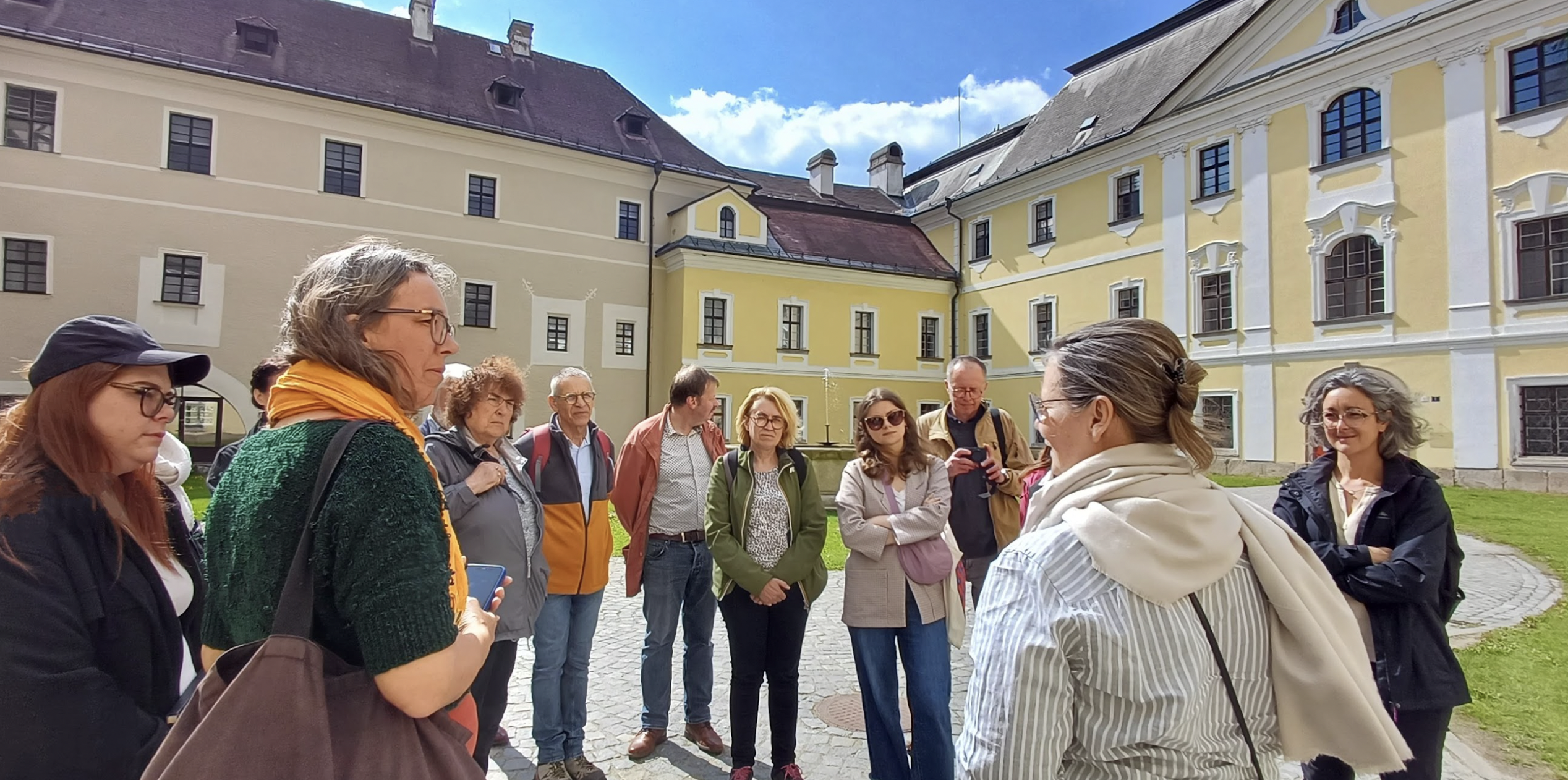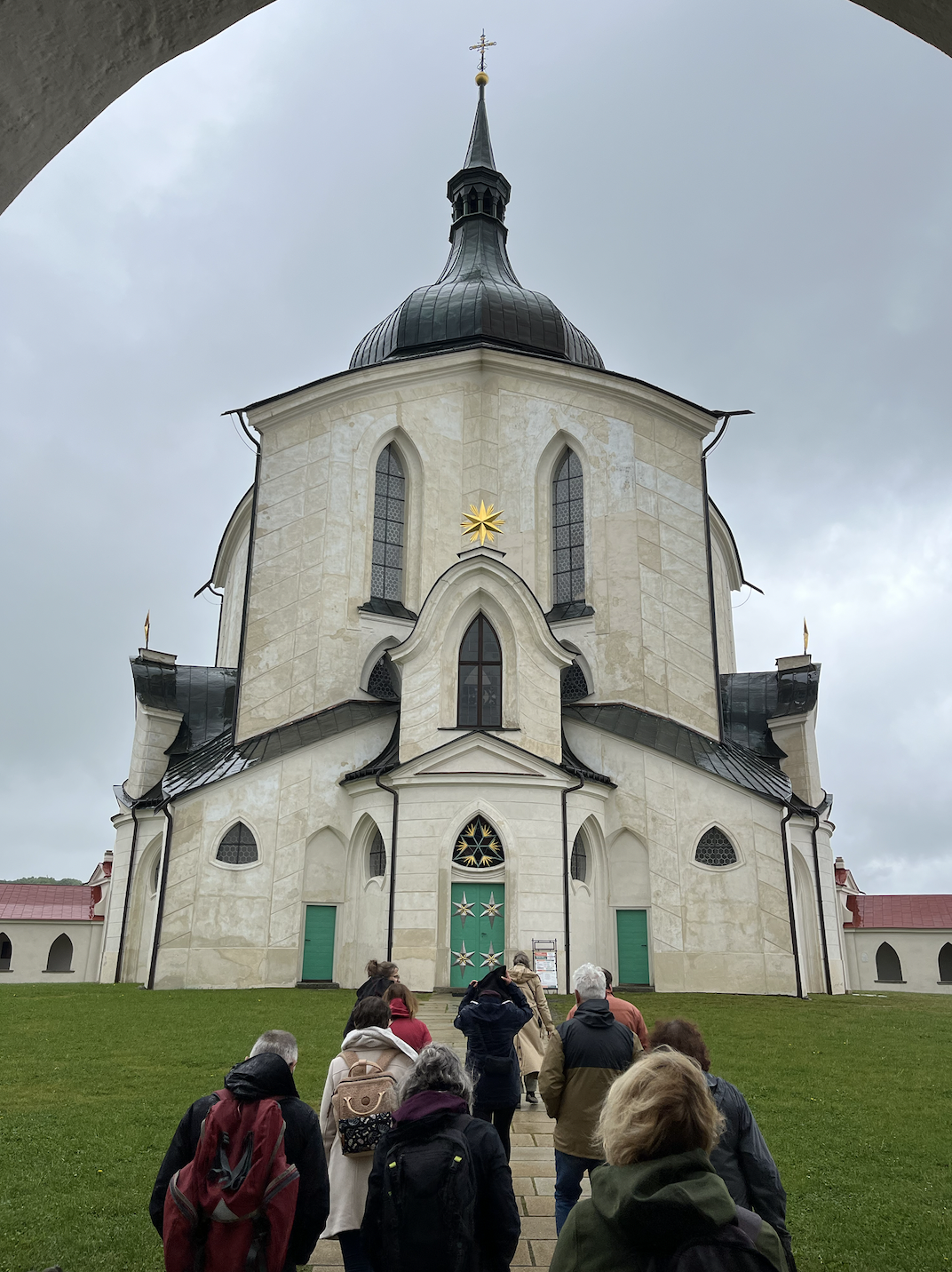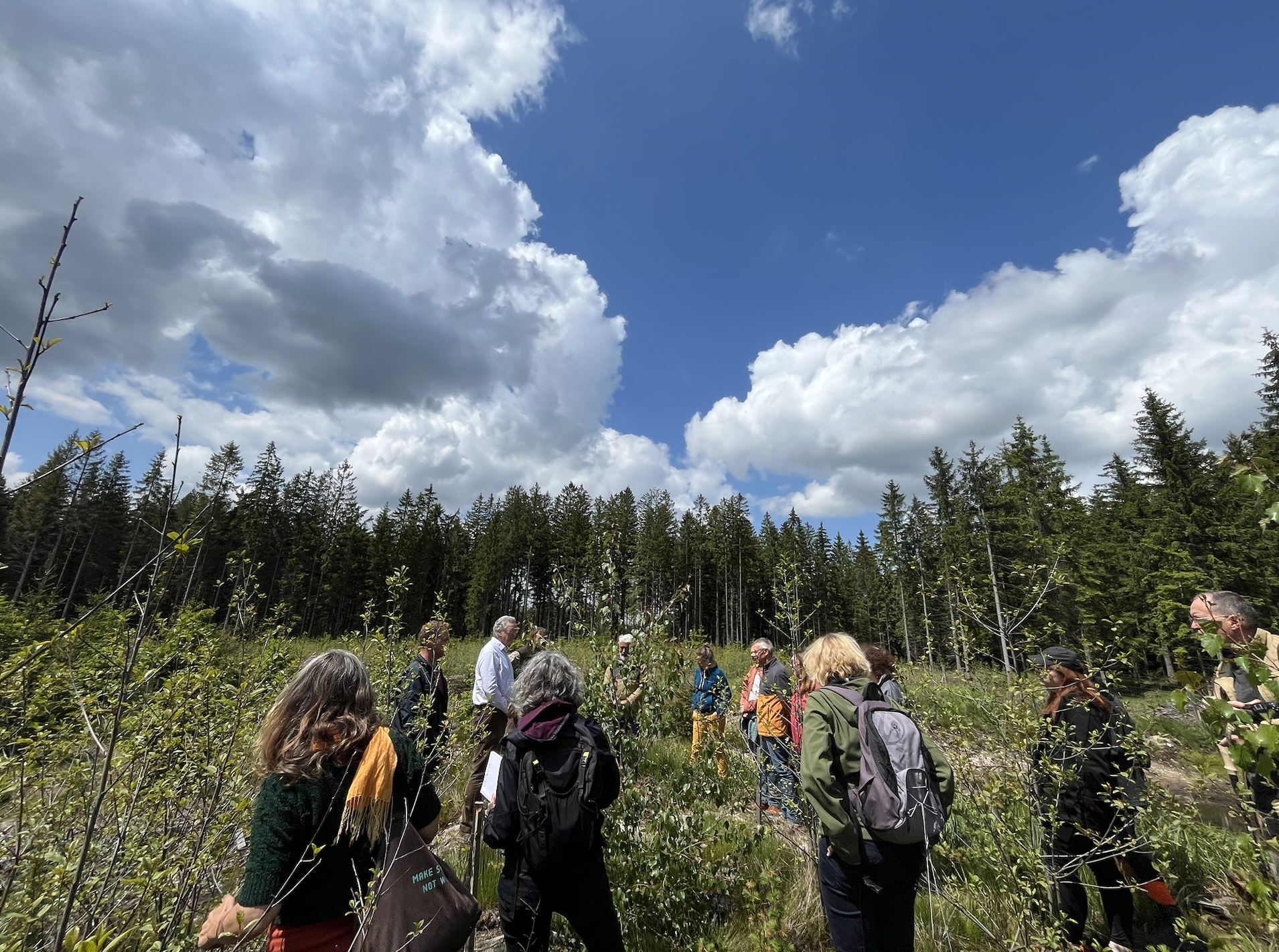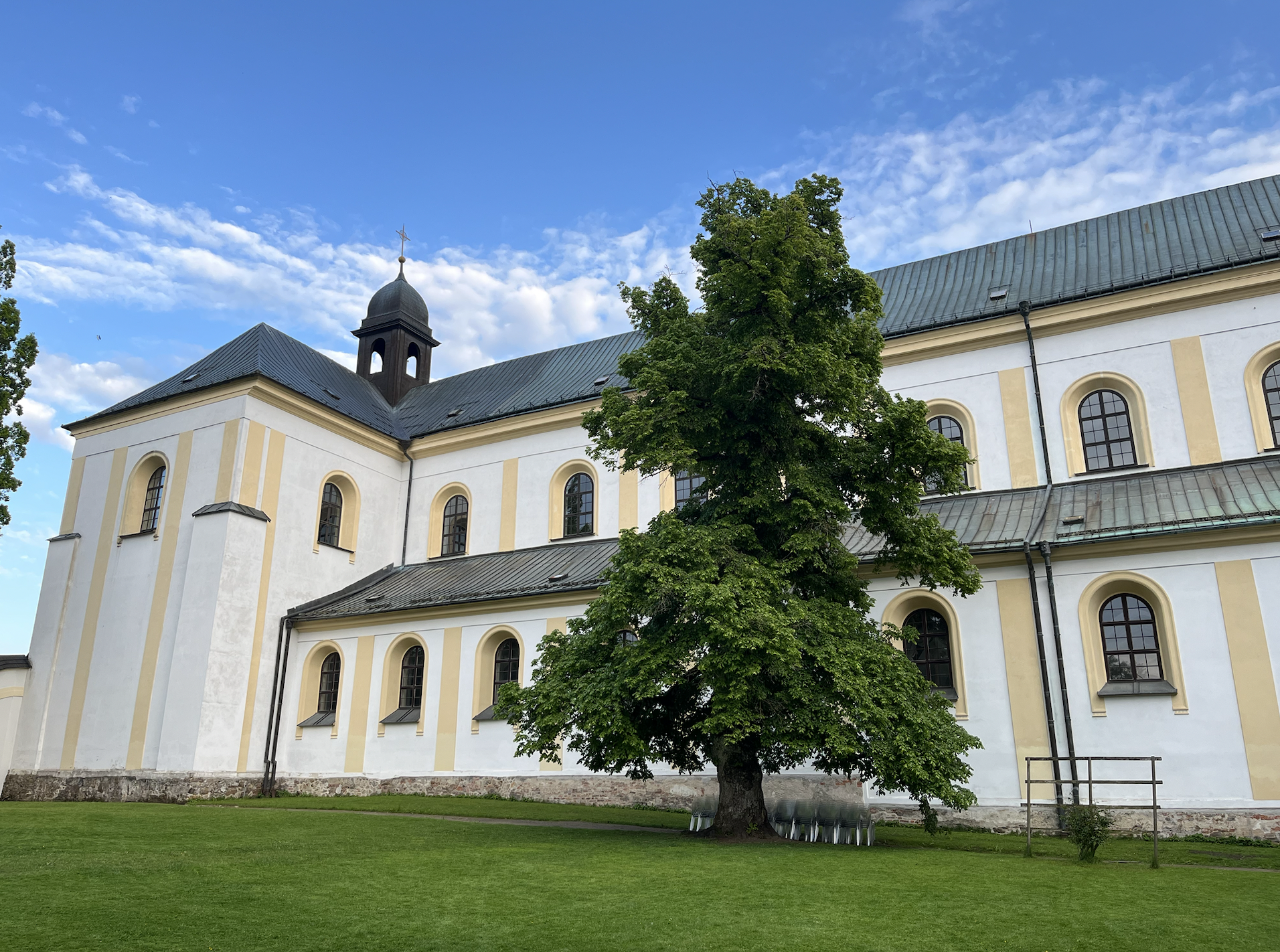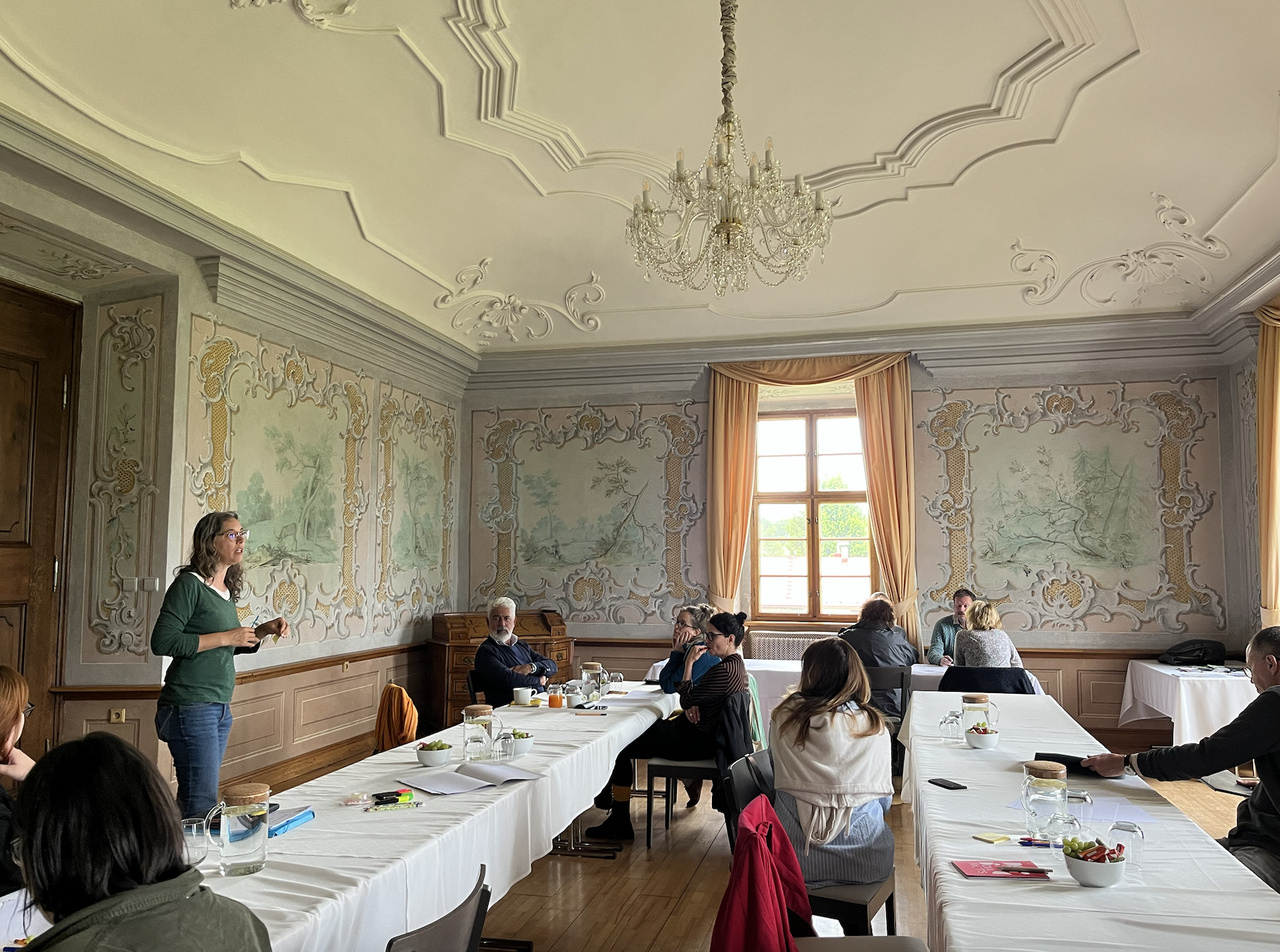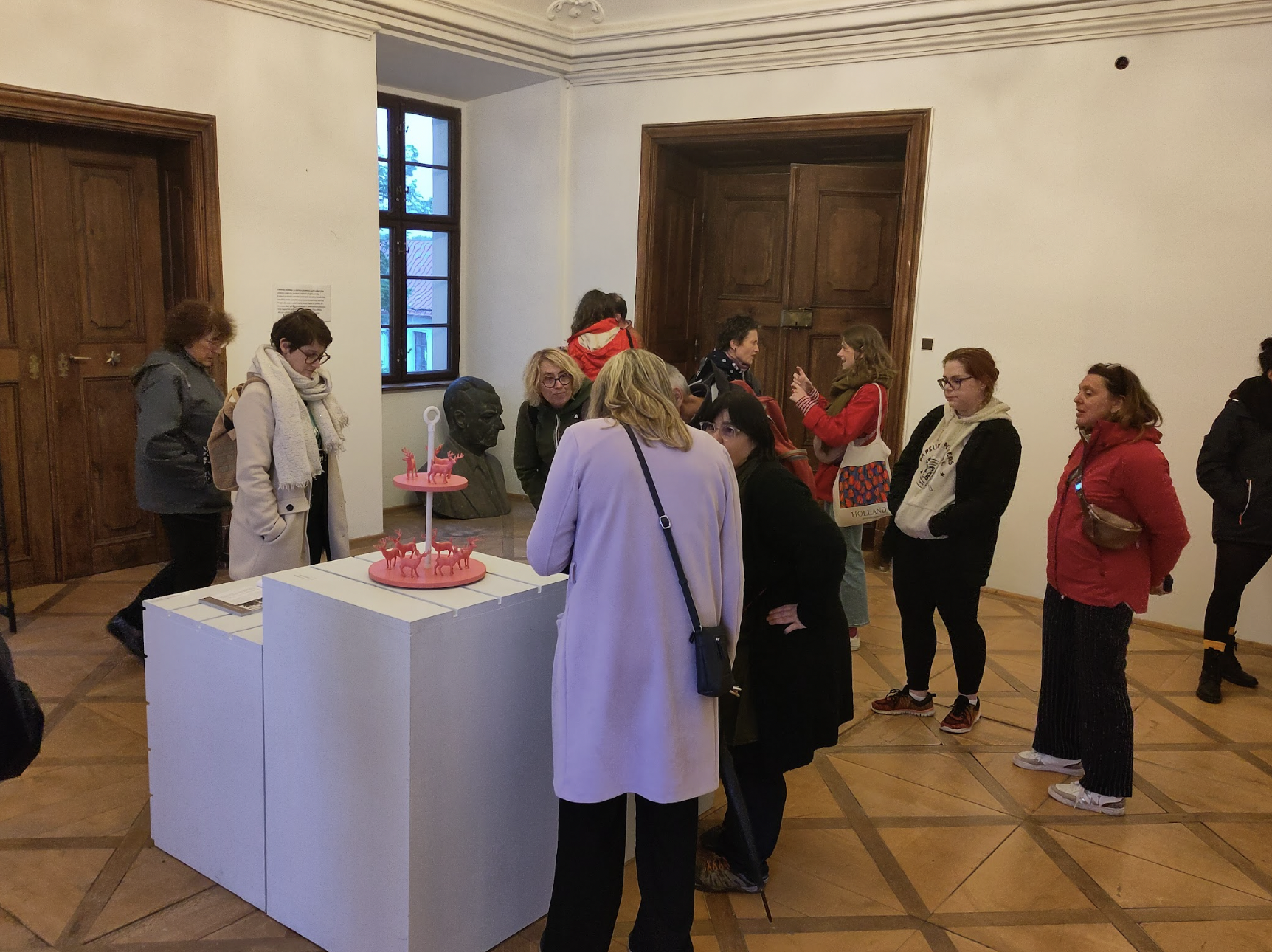From the 26th to the 29th of May 2025, the first study trip organised by the Ambronay CCR took place at Žďár Castle (an associate member of the ACCR in the Czech Republic) as part of an Erasmus+ programme on tourism and sustainability issues.
This mobility programme provided an opportunity to discover the model of Žďár Castle, which combines heritage and cultural promotion with environmental awareness and preservation. The exchanges thus made it possible to question a sustainable and ethical approach to nature and heritage, as well as to examine concepts related to heritage management such as transmission, shared responsibility, preservation and cooperation.
Among the topics discussed was the concept of the visitor experience, based on the premise that there is no such thing as international tourism in relation to a local audience, but only residents of the area or visitors, whether short-term or long-term.
The complexity of managing activities at Žďár Castle was thus understood: artistic activities inside and outside the walls, promoting the heritage and history of the site, links with public and private partners, cultural offerings throughout the year, etc. Each has its own rhythm and must be aligned with the others.
/ The spirit of the place
The development of Žďár Castle has been designed in keeping with the spirit of the place, which was originally a religious site. During the renovation work, it was decided that the museum and café, i.e. the commercial activities, would be located at the edges of the site, while the heart of the site would house the choreographic creation centre, a place of silence, introspection and reflection.
The teams set to work on designing a site where the various activities and original vocations would interact and feed into each other. For example, the museum is a source of inspiration for events, the museum's audio guide is a dialogue performed by actors to convey the spirit of the place, and the museography was developed with performing artists and film professionals.
/ Rethinking relationships
A culture of working together and shared responsibility were two concepts that guided the participants during the mobility programme. The creation, maintenance and formalisation of links between a site and its residents were discussed, and several ways of achieving this were suggested: setting up a friends' club, a donors' club, actively engaging a community of volunteers with dedicated events and offers, listening to people's expectations in a relationship of trust and mutual consideration, explaining the mediation choices made, co-constructing projects, etc.
In fact, Žďár Castle has shared its position on the promotion and transmission of historical knowledge: interpretation and recreation are claimed here insofar as history is always partial and situated. In this sense, stories and objects are put into perspective with the context in which they were produced, thus giving the public a better understanding and leaving room for enrichment.
In terms of co-creation, several CCRs have experimented with heritage walks: the Ambronay CCR (during the 2025 European Heritage Days), the Château de Goutelas, the Ferme de Villefavard and the Abbaye de Noirlac. These examples provided an opportunity for the ACCR to present its practical booklet on the values of heritage for society, created as part of the training course ‘Interpreting and applying the principles of the Faro Convention’.
With a focus on considering users and residents more as people with needs, desires and knowledge than as mere target audiences, the treatment given to welcoming everyone was the subject of several points of discussion: how should trainees and apprentices be welcomed? What model of governance should be adopted? What links should be established with hospitality stakeholders in the area?
/ What will a visit look like in the 21st century?
Participants also had the opportunity to discuss at length the approaches and formats for heritage site visits in the 21st century. Listening, adaptability and complementarity were the key words in this discussion.
For example, while there was a desire to move away from top-down guided tours towards something more participatory, even cooperative, such as heritage walks, it should also be recognised that this model is popular and requires many skills and qualities on the part of the guide.
Many questions fuelled the discussions: should the narrative start with the place or the people? Should visitors be unsettled by provoking curiosity about unexpected aspects, or should the guide simply respond to their expectations? How can the intelligence of visitors be respected during a traditional tour? What is interesting to convey and what defines it? What kind of sensory, poetic experience do we leave behind? How much space should be left for silence and wandering? How can we step outside the site to build bridges with the outside world and the contemporary world? How can we work on relationships and conviviality? How can we find the right balance between transmitting knowledge and leaving room to receive it? How can we demystify the role of the mediator?

